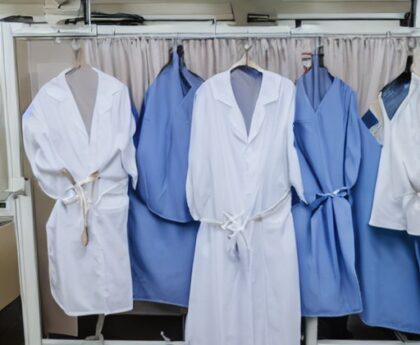A stroboscope is a versatile optical instrument used to observe and analyze the motion of rapidly moving objects or processes. It operates based on the principle of “persistence of vision,” where the human eye retains an image for a brief moment after the light source disappears. By emitting short bursts of intense light at specific intervals, stroboscopes create an illusion of slowing down or freezing fast-paced motion. This effect allows operators to perceive and study the details of movement that would otherwise be invisible to the naked eye.
Working Principle:
The fundamental concept behind a stroboscope is the synchronization of its flashing frequency with the frequency of the motion being observed. This creates an optical illusion, making it appear as though the motion is happening in slow motion or is momentarily paused. The stroboscope’s flashes of light act like “snapshots” of the moving object, enabling the observer to analyze its movement in detail.
Types of Stroboscopes:
Stroboscopes come in various types, each designed for specific applications:
- Portable Stroboscopes: Handheld and portable stroboscopes are convenient for quick inspections and troubleshooting on printing machines. They allow operators to observe moving parts and identify issues on the spot. These stroboscopes are ideal for smaller printing setups or for tasks that require mobility.
- Digital Stroboscopes: Digital stroboscopes offer precise control over flashing frequency and often come with digital displays and microprocessor controls. They are versatile and can be tailored to match the specific requirements of different printing processes. This type is suitable for both smaller and larger printing setups.
- Tube Stroboscopes (U-Tube Stroboscopes): These stroboscopes use a U-shaped flash tube to provide a wider area of illumination. They are beneficial for inspecting larger components or areas on printing machines.
- Fixed Stroboscopes: Fixed stroboscopes are stationary units that provide continuous illumination of specific areas. They are commonly used in quality control and maintenance tasks in the printing industry, especially in larger printing setups.
- LED Hand Model Stroboscopes: Compact and easy to use with one hand, LED hand model stroboscopes are suitable for quick inspections and maintenance tasks. They are particularly useful in smaller printing setups or for tasks that require agility.
When selecting a stroboscope for the printing industry, consider the following factors:
- Print Process: Different printing processes might require different levels of precision and observation. For example, flexo and rotogravure printing processes involve rapid motion and intricate alignment, making stroboscopes crucial for quality control.
- Machine Size: The size of the printing machinery and the areas that need to be inspected will influence the type of stroboscope you need. Larger machines might require stroboscopes with a wider area of illumination.
- Frequency Control: Depending on the speed of the printing process, you might need a stroboscope with precise frequency control to match the machine’s motion.
- Ease of Use: Consider the user-friendliness of the stroboscope, especially if it will be used by different operators.
Applications:
Stroboscopes find applications across various industries due to their ability to reveal high-speed motion:
- Manufacturing and Machinery Maintenance: Stroboscopes are used to inspect and troubleshoot moving parts in machinery, aiding in identifying wear, misalignments, and defects.
- Printing Industry: In processes like flexo and rotogravure printing, stroboscopes aid in print registration, quality control, and troubleshooting.
- Research and Analysis: Stroboscopes assist researchers in studying fast-moving phenomena, such as vibration analysis and fluid dynamics.
- Education and Training: Stroboscopes are used in educational settings to demonstrate and study principles of motion and frequency.
Read more:- How Auto Detailing Services Enhance Your Pride And Joy?
Conclusion:
Stroboscopes are invaluable tools that provide insights into the intricacies of rapid motion. By capitalizing on the persistence of vision, they offer a unique perspective that enhances precision, troubleshooting, and quality control in various industries. Whether in manufacturing, research, or education, stroboscopes empower us to see beyond the limits of our naked eye, unlocking hidden details within the dynamic world of motion.

